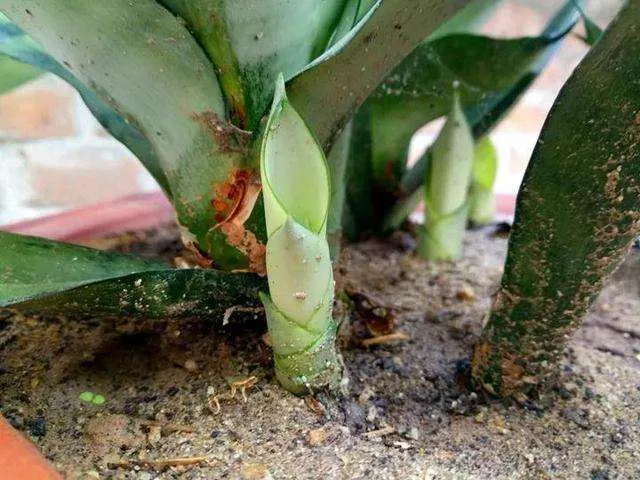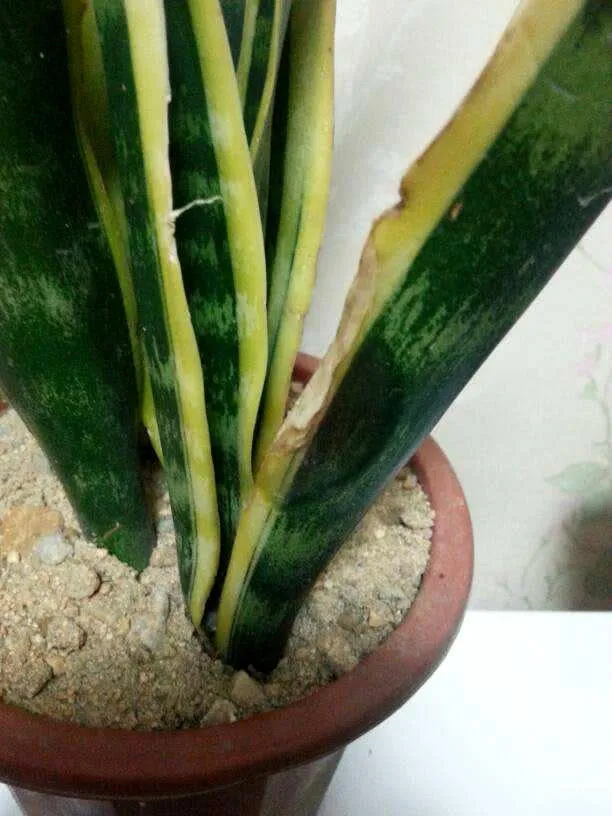Underwatered Snake Plant (Sansevieria Trifasciata) - Signs And How To Fix
Written by Ivy
Dec 16 2022
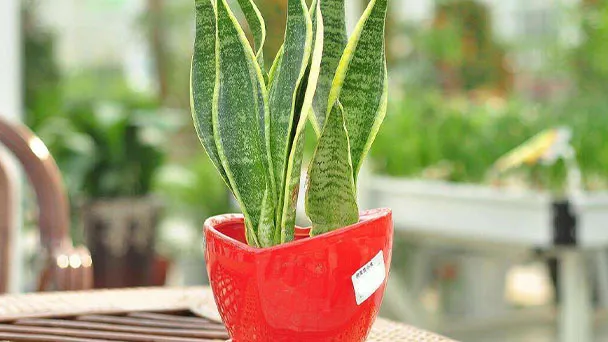
Snake plant is a very common indoor potted green plant. It not only has a good ornamental value but also can purify the indoor air. Usually, it is a plant easy to care for. However, if the snake plant is underwatering, it may have several symptoms like leaves curling or drooping, leaves turning yelleow or brown, slow growth and so on. To revive your underwatering snake plant, you have to figure out the problem and take countermeasures.
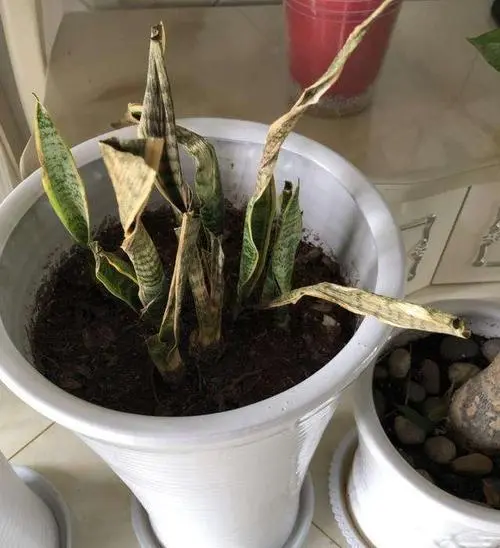
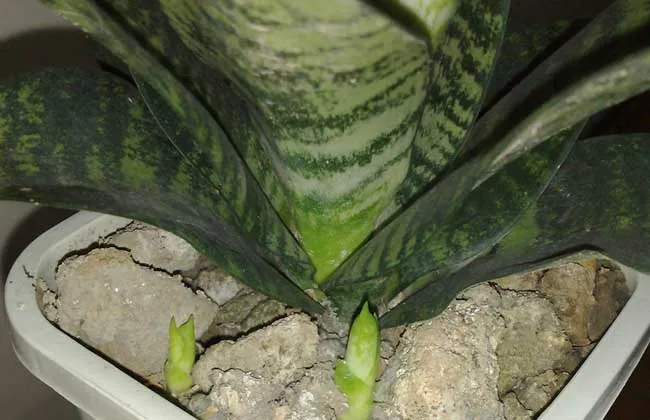
The depth of the flowerpot needs to be determined according to the varieties of snake plant. The depth of the flowerpot used by different varieties of Snake plant is different. Of course, the material of snake plant flowerpots is also very important. Normally, we need to choose flowerpots with good drainage and air permeability, such as ceramic pots, tile pots, purple sand pots, etc. the drainage and air permeability are very good.
Because only the tip of the underwater snake plant has problems, the lower part of the dried leaves should be left. In this way, the photosynthesis of the seed is more sufficient, and the new root will grow better, and the root can absorb nutrients and other substances to its leaves, so that the leaves will not dry up again. In addition, we usually have to sprinkle some water on the underwater snake plant, because humidity has an impact on it, so this is another way to keep the leaves of the underwater snake plant from drying up.
Symptoms of underwateringIdentifying the causeIrregular wateringToo loose potting mixNitrogen toxicityHow to save an underwatered snake plant?Cut off severely affected partsFix the soil mixPlace the pot in suitable environmentHow to Revive Underwatered Snake PlantChoose The Right Container Proper Watering PracticeUse Quality WaterSufficient LightCorrect Temperature Accurate HumidityHow often should you water an indoor snake plant? Can I cut the brown tips of my Snake Plant?
Symptoms of underwatering
If the snake plant is underwatering, it may occur the following signs:- Leaves curling or drooping
- Leaves turning yellow or brown
- Brown leaf tips
- Dry leaf edges
- Dryness of soil
- Brittle roots
- Slow Growth
Identifying the cause
Irregular watering
Many people think snake plant is drought resistant, and frequent watering is easy to rot roots, so it is often watered once every long time. In this way, the basin soil is often too dry, so that the root system of snake plant is dry and the growth is limited. On the surface, it looks bad, and even wilts and dead leaves.Too loose potting mix
If the peat soil is not compacted, there will be a large gap in the soil, and the soil capillary at the gap will break in the process of lifting water, resulting in that the water content of peat soil in a certain area in the flower pot cannot be exported to the soil surface and cannot participate in evaporation. Therefore, loose peat soil will contain more water and is not easy to dry completely. Granular soil can hold less water itself. Granular soil is used for too small flowerpots or too shallow flowerpots, which will inevitably dry quickly, so it will lead to snake plant underground.
Nitrogen toxicity
Nitrogen can promote the vegetative growth of plants. Excessive nitrogen in underground snake plant will excessively strengthen the vegetative growth of plants, consume a large amount of photosynthetic products by vegetative growth, accumulate less, and inhibit reproductive growth, so that the underground snake plant withers and grows slowly.How to save an underwatered snake plant?
Cut off severely affected parts
After we found that the leaves of underwater snake plant were rotten, we used scissors to cut off the rotten part. Use a sharp knife to reduce damage to the underwater snake plant. After trimming, carbendazim can be applied to the incision. After disinfection and sterilization, the underwater snake plant will resume growth in a short time. Pay attention not to contact water during the recovery process.Fix the soil mix
The garden soil is relatively soft and has certain drainage and air permeability, which can be used for the caring of underwater snake plant. The biggest advantage of using this kind of soil is that it is easy to obtain, which can be collected from gardens or green belts. However, the nutrient content of this soil may not be very high, and additional base fertilizer needs to be added to improve the fertility of the soil. Specifically, we can mix some rotten bean cakes into it. If we want to improve the drainage and air permeability of the soil, we can add a portion of cinder to it.
Place the pot in suitable environment
Snake plant has very low requirements for light. As long as it can provide sufficient light, it can grow well. We should give more light to underwater snake plant during normal maintenance, and it can be satisfied by placing balcony or windowsill. Just don't expose snake plant to strong light for a long time. It's easy to be sunburned.How to Revive Underwatered Snake Plant
Choose The Right Container
When replanting the underwater snake plant, we need to choose the flowerpot according to the size of the underwater snake plant. If it is an underwater snake plant with large plants, we can use deep flowerpots for maintenance. If it is a variety with small plants, plant it in shallow pots. Generally, if the leaves reach about 70cm, the snake plant of this variety needs to choose a flowerpot with a depth of more than 30cm. If the flowerpot is too small, it is easy to inhibit its growth. If the volume of snake plant is very small, the depth of the flower pot is about 15 to 20 cm.The depth of the flowerpot needs to be determined according to the varieties of snake plant. The depth of the flowerpot used by different varieties of Snake plant is different. Of course, the material of snake plant flowerpots is also very important. Normally, we need to choose flowerpots with good drainage and air permeability, such as ceramic pots, tile pots, purple sand pots, etc. the drainage and air permeability are very good.
Proper Watering Practice
We should timely adjust the watering law of the underwater snake plant. Although the underwater snake plant is afraid of waterlogging, there is generally no big problem with proper watering. Usually we can water the basin soil when it is dry. In addition, we can keep it well ventilated and keep it in a place with good scattered light. As long as the environment is suitable for its growth, the underwater snake plant can quickly give full play to its growth potential and restore normal growth.Use Quality Water
We water the underground snake plant with rainwater. If not, we can also use rice washing water, beer and well water. Rainwater contains a large amount of dissolved oxygen, which can increase the nutrient absorption efficiency of underwater snake plant. Rice washing water contains a lot of nutrients, beer is rich in CO2, and well water contains a lot of minerals, which can provide nutrients for plant growth.Sufficient Light
Snake plant is only shade resistant. In fact, snake plant likes light very much. Therefore, to restore underwater snake plant indoors, in addition to not being exposed to the sun at noon in summer, we'd better keep snake plant in a place with sufficient light, and the worst thing is in a bright astigmatism, so that its leaves will be plump, firm and have sufficient photosynthesis, It is also very easy to grow lateral buds.Correct Temperature
The suitable growth temperature of snake plant is between 18 ° C and 26 ° C. when the winter temperature is lower than 12 ° C, the growth of snake plant may stop. Therefore, when maintaining snake plant in winter, we cannot keep snake plant below 10 ° C for a long time, otherwise it will cause rot at the bottom of the plant.Accurate Humidity
The snake plant is the monitor of indoor humidity. It can also detect the humidity in the bedroom. If the snake plant grows well, it means that the humidity is just right, and the basin soil is dry, which will show the underwater snake plant. At this time, we need to water or supplement the air humidity in time.How often should you water an indoor snake plant?
If snake plant is maintained indoors, we can water it once every five days. In high temperature environment, we can water it once or twice a day. In low temperature environment, we can water it every half a month. When watering, we can choose mineral rich river water to directly irrigate the soil to avoid leaf contamination with water. When the soil is dry, it needs to be watered and moisturized immediately. In case of excessive watering, the ponding shall be drained in time, and the snake plant shall be transferred to a ventilated place for maintenance.Can I cut the brown tips of my Snake Plant?
After we found that the blade tip of underwater snake plant was dry, we cut off the dry part at the first time and retained the healthy part that was not dry. The way to prevent dryness is to often spray water on the leaves, increase humidity, reduce temperature and create an environment suitable for their growth.Because only the tip of the underwater snake plant has problems, the lower part of the dried leaves should be left. In this way, the photosynthesis of the seed is more sufficient, and the new root will grow better, and the root can absorb nutrients and other substances to its leaves, so that the leaves will not dry up again. In addition, we usually have to sprinkle some water on the underwater snake plant, because humidity has an impact on it, so this is another way to keep the leaves of the underwater snake plant from drying up.
Read More:
- How Much Light Does Snake Plant Need
- How Often to Water Snake Plant
- How To Fix Snake Plant Root Rot
- How To Save Overwatered Snake Plant
- Snake Plant: Grow & Care for Sansevieria Trifascia
- How to Get a Snake Plant to Bloom with Simple Ways
- Is Snake Plant Poisonous to Cats - How to Prevent
- What Are the Benefits of Snake Plants - Everything You Need to Know
- How to Reroot A Snake Plant With Simple Steps
Latest Updated
- Benefits of Bugleweed - 7 Science-backed Health Benefits
- Bugleweed Dangers & Side Effects - Is It Poisonous?
- How to Plant Evergreen Trees - What You Should Know
- When to Plant Evergreens - Grow Guide for Evergreen Trees
- 12 Wonderful Evergreen Shrubs for Your Garden
- 12 Popular Evergreen Plants with Pictures for Beginners
- When And How To Prune A Lilac Bush Like a Pro
- How to Grow & Care for Lilac Vine (Hardenbergia Violacea)
- Japanese Lilac Tree (Syringa Reticulata) Care & Propagation Guide
- Shumard Oak Pros and Cons - What to Know
Popular Articles
- Winter maintenance of Antirrhinum Majus
- How to Grow Terminalia Mantaly Tree
- How to Grow and Care for Crossostephium Chinense
- How to grow Antirrhinum Majus in spring
- Peristeria Elata (Dove Orchid) Profile: Info & Care Guide
- Underwatered Snake Plant (Sansevieria Trifasciata) - Signs And How To Fix
- How to Care for Brazilian Jasmine Plant (Mandevilla Sanderi)
- How to Grow & Care for Graptopetalum Purple Delight in Summer
- Rosa Chinensis (China Rose): Plant Growing & Care Tips
- How to Care for Baby Sun Rose (Aptenia Cordifolia)
